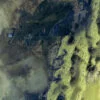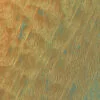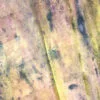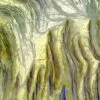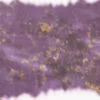‘I feel my Spectre rising upon me! . . .
The Spectre is, in Giant Man; insane, and most deform’d’
– William Blake
The man squats on my chest. His palms stretch across my collarbone; his fingers extend to press my carotid arteries.
A mouse hangs by its tail from the bedroom lamp to my right. It swings back and forth and smiles and squeaks and watches, waiting for its turn.
The man lets go for an instant, admiring the blanching of my skin. He thrives on the immobile aware and he visits me every week.
The mouse arrives. It nibbles my left eyebrow, gently but purposefully. The juicy cornea is nearby; crust on a rice pudding. He will reach his destination soon. But not yet. The man has gone but somehow his shadow lingers, floating above me.
I am neither fully awake nor entirely asleep. In fact, I wonder if I am even alive. The myth of Cartesian dualism is realised at this moment; mind and body are two.
In sleep paralysis, I can breathe and open my eyes only to realise that I am helplessly drowning. The vivid imagery and immobility of REM sleep have intruded upon my wakening – there are incubus hallucinations of suffocation and intruder hallucinations of evil. Flee, says the amygdala. But I am frozen, dissociated.
I gasp and sweat. I am here, I tell myself. I am here.
I try to wriggle my left little finger, willing a reunion of mind and body.
The mouse has moved onto my eyeball, clawing, smiling still.
Sleep paralysis is a neurological glitch, experienced by one in twenty at some point in their lives. The sleep-deprived shift worker or the jet-lagged traveller or the anxious insomniac crashes swiftly, unexpectedly, into the dark heart of REM sleep rather than gently traversing its hinterlands en route. For others, sleep paralysis is a symptom that accompanies narcolepsy or trauma. The paralysis is harmless and transient – seconds to minutes perhaps – but the distress of hypnagogic hallucinations remains. Rarely, very rarely, sleep paralysis is a gateway to lucid dreams. Not for me.
I was twelve years old when I first saw Henry Fuseli’s 1781 painting, The Nightmare. A woman lies prostrate, her arms hanging limply from the edge of her bed, her head extending strangely behind her neck. Carmine sheets drip to the ground. An ape-like homunculus squats on her chest. A horse stands nearby waiting for the incubus to complete his attack, eyes bulbous. Chiaroscuro – light and shadow; in my mind, consciousness and unconsciousness.
As a neurologist, I understand the sleep paralysis, the Gothic horror of my every week – it simply demonstrates the vagaries of the sleep cycle. But the incubus who paralyses the waking dreamer is imagined differently in every culture. In some places they are alien visitations and abductions. The Anglo-Saxon sleepers who would wake believing they had been ridden by the hag. In Zanzibar, the shadowy shape-shifter called Popobawa enters the bedrooms of those who do not believe in its existence – sometimes raping the paralysed. The Hmong refugees emigrated to America after civil conflict; a place and time where they could not honour their ancestors or worship within now fractured communities, their shamans far away. And so they are visited by the tsog tsuam or pressure demons; some even die by their evil. Then there are the aqtuqsinniq or uqumangirniq of the Canadian Inuit, the digeunton (pressers-on) of Indonesia and the Chinese experience of bei gui ya (being held by a ghost) and the karabasan or dark presser of Turkey. In St Lucia, the spirits of dead babies clutch the throats of the sleeping.
These stories are in some ways my stories. True, mine are grounded in neurotransmitters and brainwaves and sleep cycles. But at that moment when I am awake but asleep, when my body and mind are two, I see the Popobawa and the karabasan and kokma and tsog tsuam. In that moment, I believe in them all.
Finally, my little finger moves. My brain and mind are one. I am alive and Descartes is dead.
Photograph © Jim O’Neil


